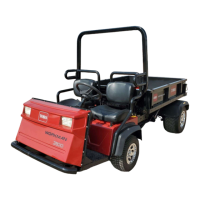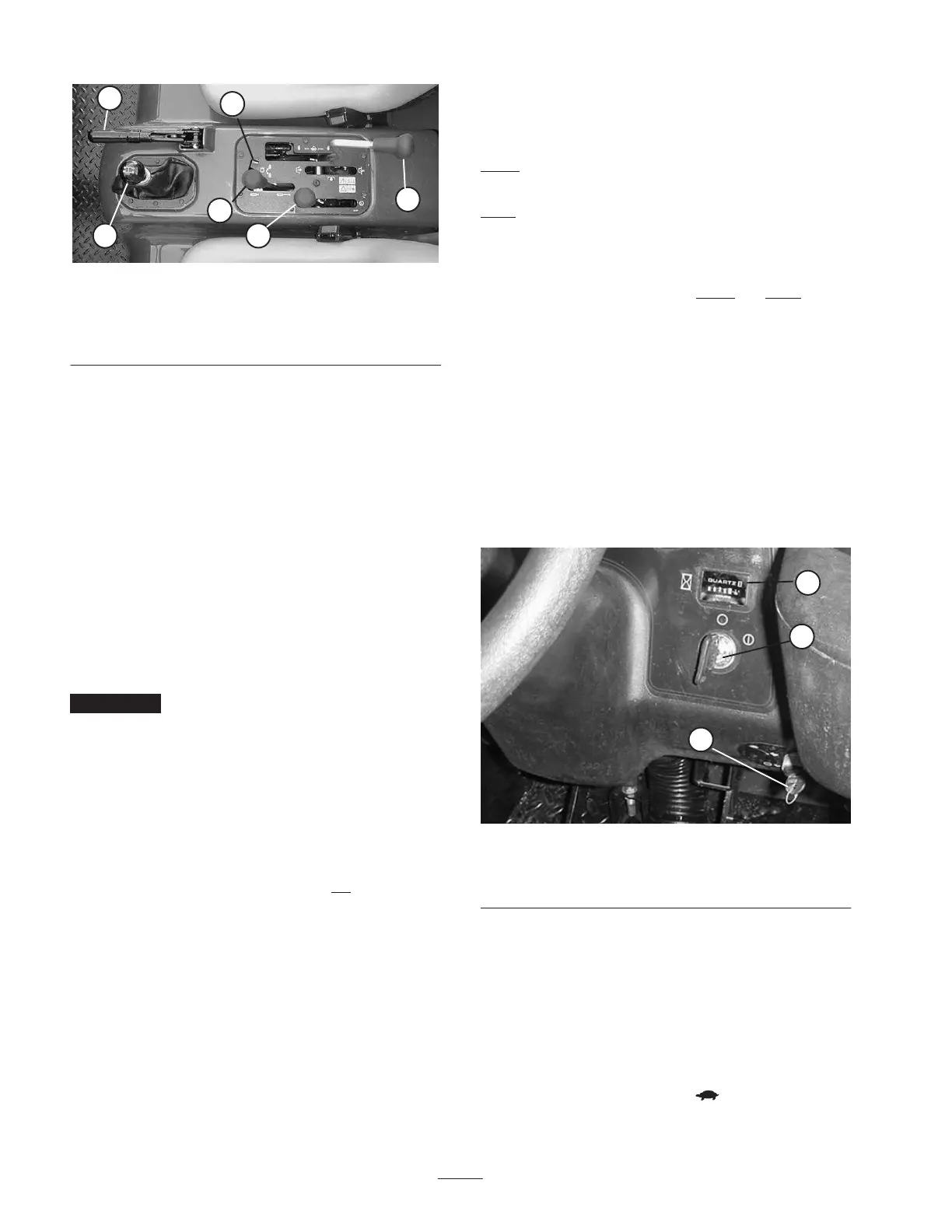22
2
1
4
3
6
5
Figure 14
1. Gear shift lever
2. Parking brake
3. Hydraulic bed lift
4. Hydraulic lift lock
5. Differential lock
6. High–low range shifter
Parking Brake
Whenever the engine is shut off, the parking brake (Fig. 14)
must be engaged to prevent accidental movement of the
vehicle. To engage the parking brake, pull back on lever. To
disengage, push lever forward. Make sure parking brake is
released before moving vehicle. If vehicle is parked on a
steep grade, make sure parking brake is applied. Also, shift
the transmission into 1st gear on a uphill grade or reverse
on a down hill grade. Place chocks at the down hill side of
wheels.
Hydraulic Lift
Raises and lowers bed. Move rearward to raise, forward to
lower (Fig. 14).
Important When lowering bed, hold lever in forward
position for 1 or 2 seconds after bed contacts frame to
secure it in lowered position. Do not hold the hydraulic lift
in either the raise or lower position, for more than 5
seconds, once the cylinders have reached the end of their
travel. The hydraulic pump may over heat, resulting in
pump damage.
Hydraulic Lift Lock
Locks lift lever so hydraulic cylinders do not operate when
vehicle is not equipped with a bed (Fig. 14). It also locks
lift lever in ON position when using the hydraulics for
attachments.
High–Low Range Shifter
Adds three additional speeds for precise speed control
(Fig. 14).
• Vehicle must be completely stopped before shifting
between High and Low range.
• Shift only on level ground.
• Depress clutch pedal fully.
• Move lever fully forward for High and fully rearward
for Low.
HIGH
is for higher speed driving on level, dry surfaces
with light loads.
LOW
is for low speed driving. Use this range when greater
than normal power or control is required. For example,
steep grades, difficult terrain, heavy loads, slow speed but
high engine speed (spraying).
Note: There is a location between HIGH
and LOW in
which the transaxle is in neither range. This should not be
used as a neutral position because the vehicle could move
unexpectedly if the HIGH–LOW shifter is bumped and the
gear shift lever is in gear.
Ignition Switch
The ignition switch (Fig. 15), used to start and stop the
engine, has three positions: OFF, RUN and START. Rotate
key clockwise — START position — to engage starter
motor. Release key when engine starts. The key will move
automatically to the ON position. To shut engine off, rotate
key counterclockwise to OFF position.
3
1
2
Figure 15
1. Hour meter
2. Ignition switch
3. 3rd high lockout switch
Hour Meter
Indicates the total hours of machine operation. The hour
meter (Fig. 15) starts to function whenever the key switch
is rotated to “ON” position or if engine is running.
3rd High Lockout Switch
Moving switch (Fig. 15) to slow– – position and
removing key will prevent use of third gear when in the
High range. Engine will shut off if shift lever is moved to

